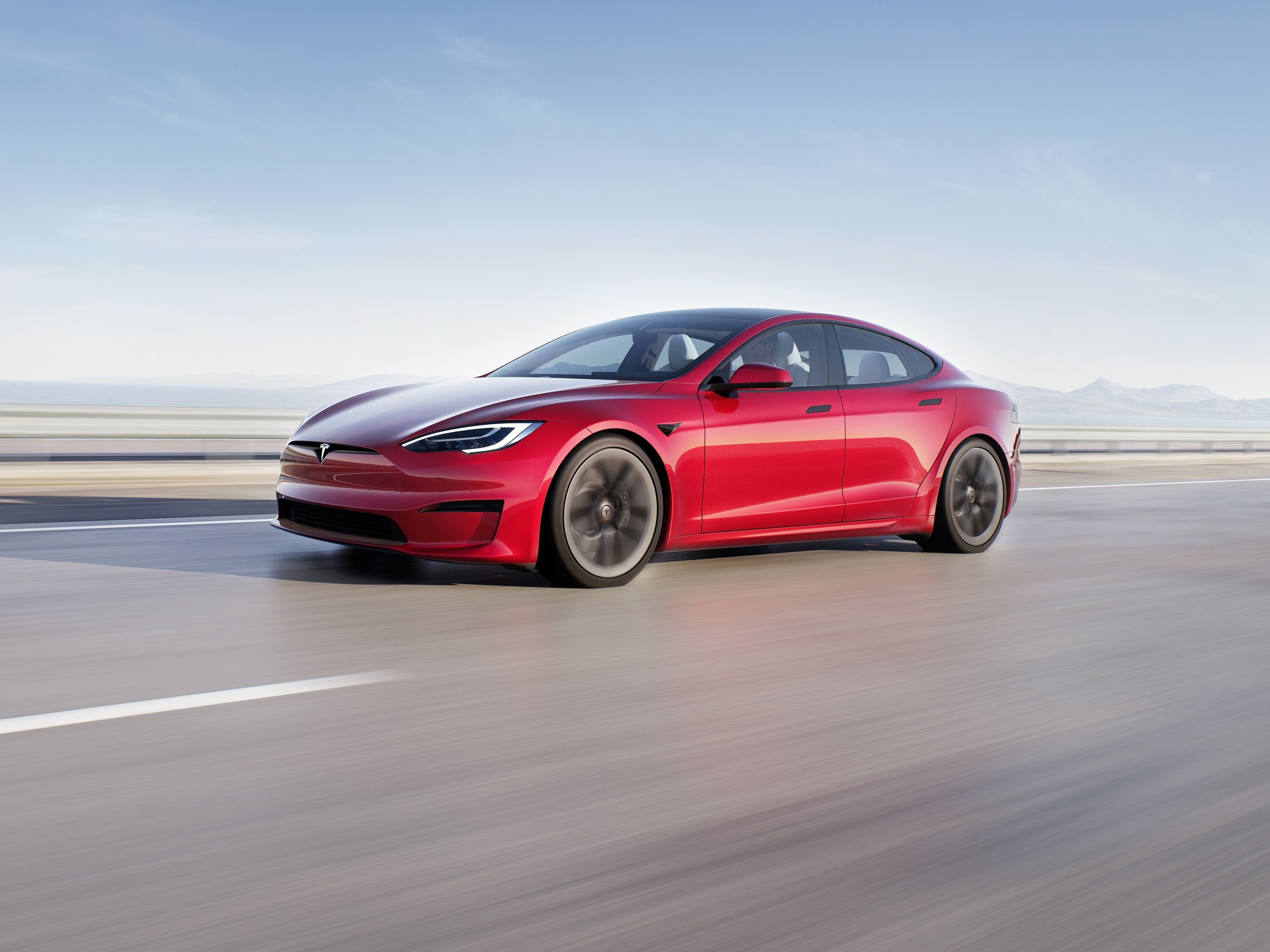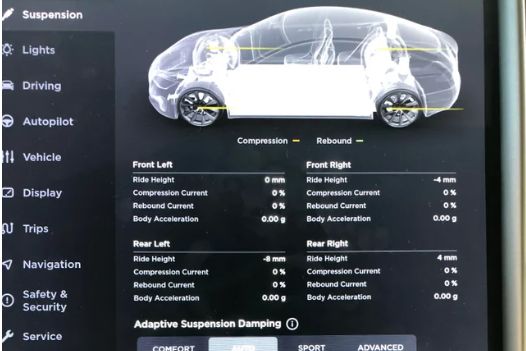
Owners of certain Tesla Model S sedans and Model X crossovers are gaining unprecedented access to their cars' suspensions with Tesla's latest software update, as the automaker sets the stage for the sort of "game-changing" tech that CEO Elon Musk feels will set the forthcoming Cybertruck apart from the competition.
The software update started being pushed to Tesla's US fleet late last week, including among other things a screen that shows each damper's ride height, compression stiffness, and rebound stiffness, along with the G forces acting on each corner of the vehicle. Those readings update in real time, according to Reddit user AndrasHatvani, allowing drivers to monitor exactly how the adaptive Raven suspension that premiered last year is adjusting itself to compensate for the body motion.
Tesla has also revised the suspension ride height logic, noting that when ride height "is manually adjusted to High or Very High, your car now automatically lowers after you drive a short distance." Drivers can manually override that by tapping "Keep" next to the Ride Height slider if the vehicle is, say, trudging through snow or doing some light off-roading, maintaining a raised ride height until the maximum allowed speed is reached.
The update is especially relevant because of something Elon Musk tweeted last February - that "active ride height & active damping are game-changing for a truck or any car with a high max/min weight ratio." That is to say, any vehicle that might sometimes be used to haul hundreds or thousands of pounds of cargo.
In addition to these adaptive suspension features, the latest Tesla software also revises how the company's vehicles interface with the Tesla Powerwall home battery backup system, allowing vehicles to recharge from the Powerwall while constantly monitoring power demands from the house. As the house's power demands fluctuate, charging will slow or cease as needed in order to make sure the house has enough juice.

